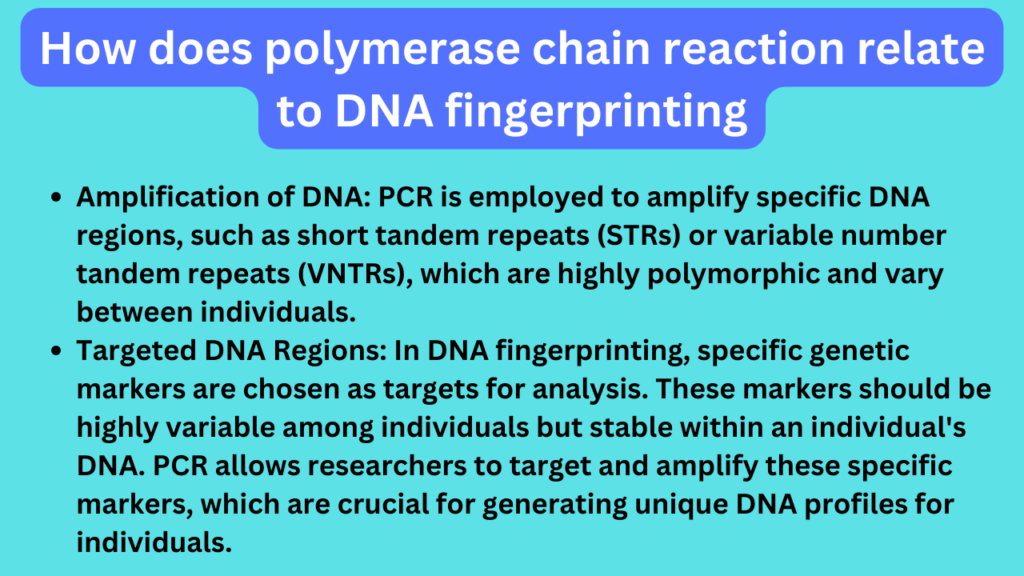Polymerase Chain Reaction (PCR) is a pivotal molecular biology technique that plays a critical role in DNA fingerprinting.

DNA fingerprinting, also known as DNA profiling or DNA typing, is a method used to identify and compare individuals based on their unique DNA patterns.
Here we will explore how does polymerase chain reaction relate to DNA fingerprinting.
- Amplification of DNA: PCR is employed to amplify specific DNA regions, such as short tandem repeats (STRs) or variable number tandem repeats (VNTRs), which are highly polymorphic and vary between individuals. Amplification is essential because the small amounts of DNA typically found at a crime scene or in a biological sample are often insufficient for direct analysis.
- Targeted DNA Regions: In DNA fingerprinting, specific genetic markers are chosen as targets for analysis. These markers should be highly variable among individuals but stable within an individual’s DNA. PCR allows researchers to target and amplify these specific markers, which are crucial for generating unique DNA profiles for individuals.
- Thermal Cycling: PCR involves a thermal cycling process that repeatedly heats and cools the DNA sample, causing it to denature, anneal, and extend. This cycle of temperature changes allows for the rapid and precise amplification of the selected DNA regions. This is essential in DNA fingerprinting to create enough DNA for analysis.
- Multiplex PCR: Multiplex PCR is a variant of PCR used in DNA fingerprinting. It allows for the simultaneous amplification of multiple DNA markers in a single reaction, making the process more efficient and economical. This is particularly valuable in forensic DNA analysis where sample quantities may be limited.
- Accuracy and Reproducibility: PCR is known for its high accuracy and reproducibility. This is critical in DNA fingerprinting because even small errors can lead to misidentification. Consistency in amplification is crucial for producing reliable DNA profiles.
- Quantification: Quantitative PCR (qPCR) can be used to measure the amount of DNA in a sample. This is important in DNA fingerprinting to ensure that there is enough DNA material to generate a reliable profile.
- Database Construction and Comparison: After PCR amplification, the DNA fragments are separated by size using techniques like gel electrophoresis or capillary electrophoresis. The resulting DNA fragments are then analyzed, and the unique pattern of fragment sizes constitutes the individual’s DNA fingerprint. These patterns are compared to databases of known DNA profiles to determine the identity of a sample or match it to a specific individual.